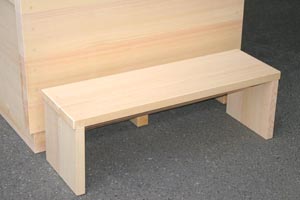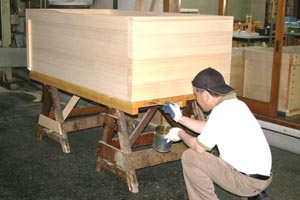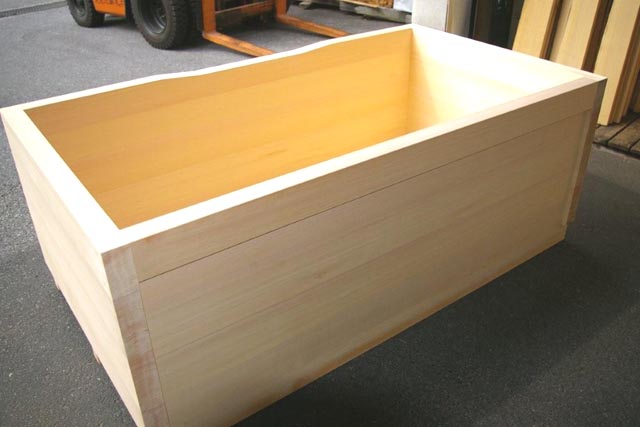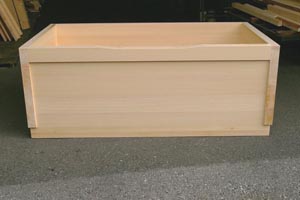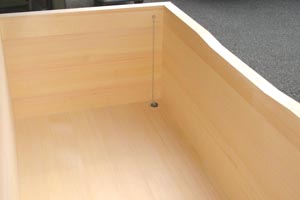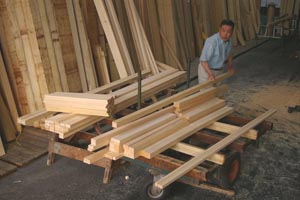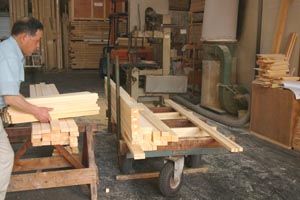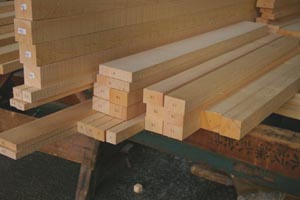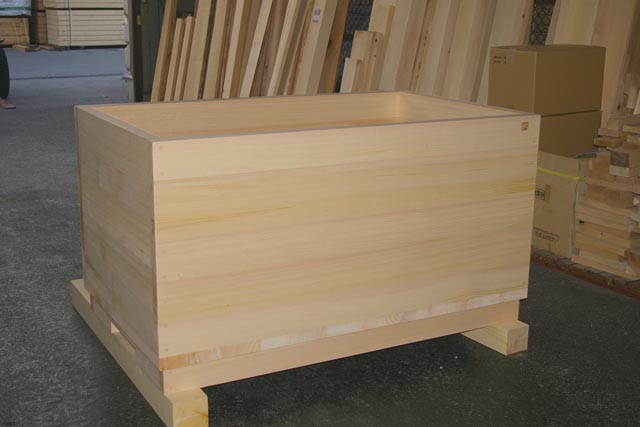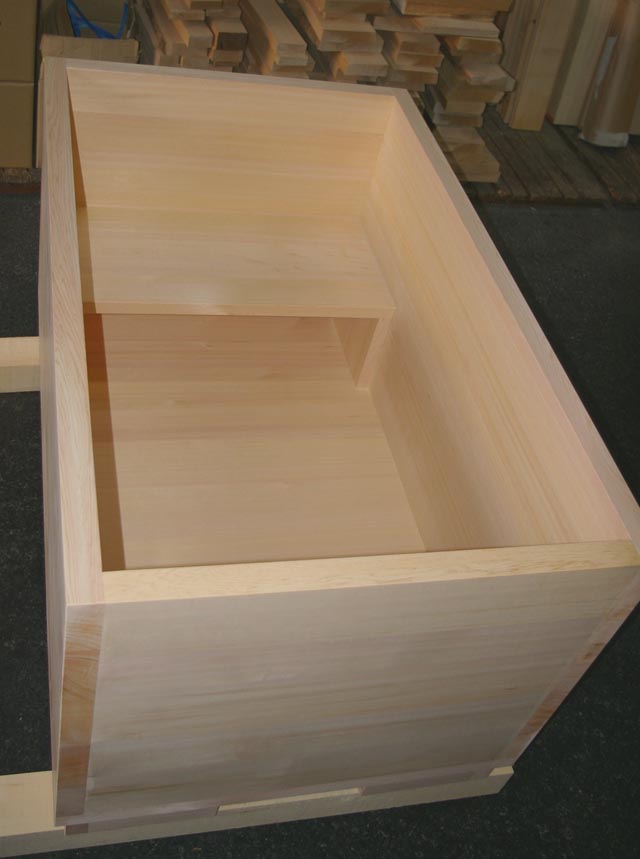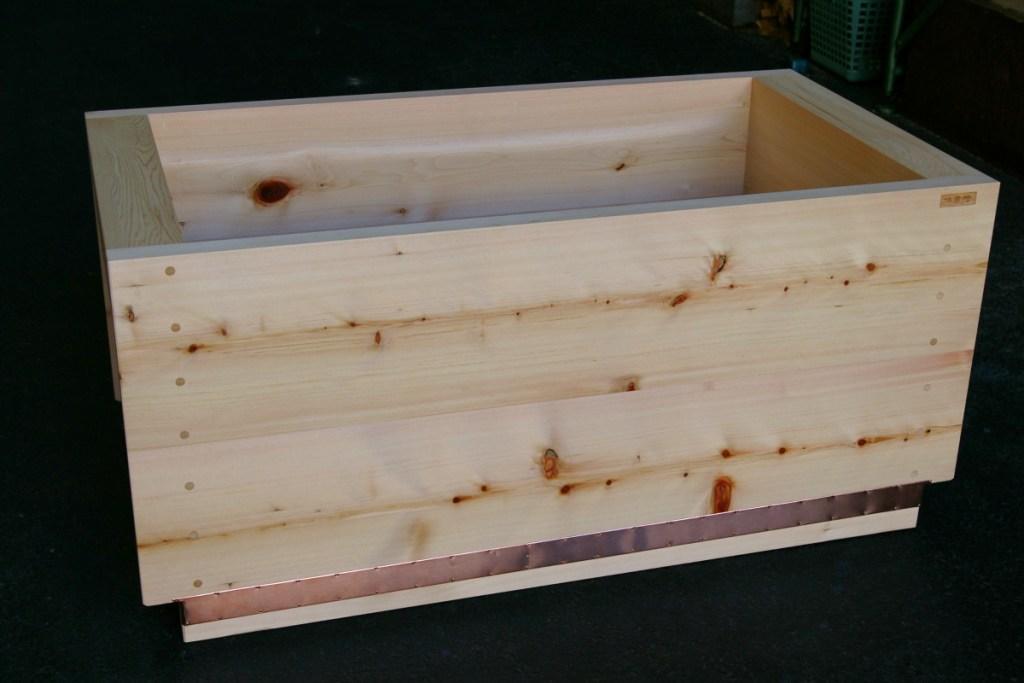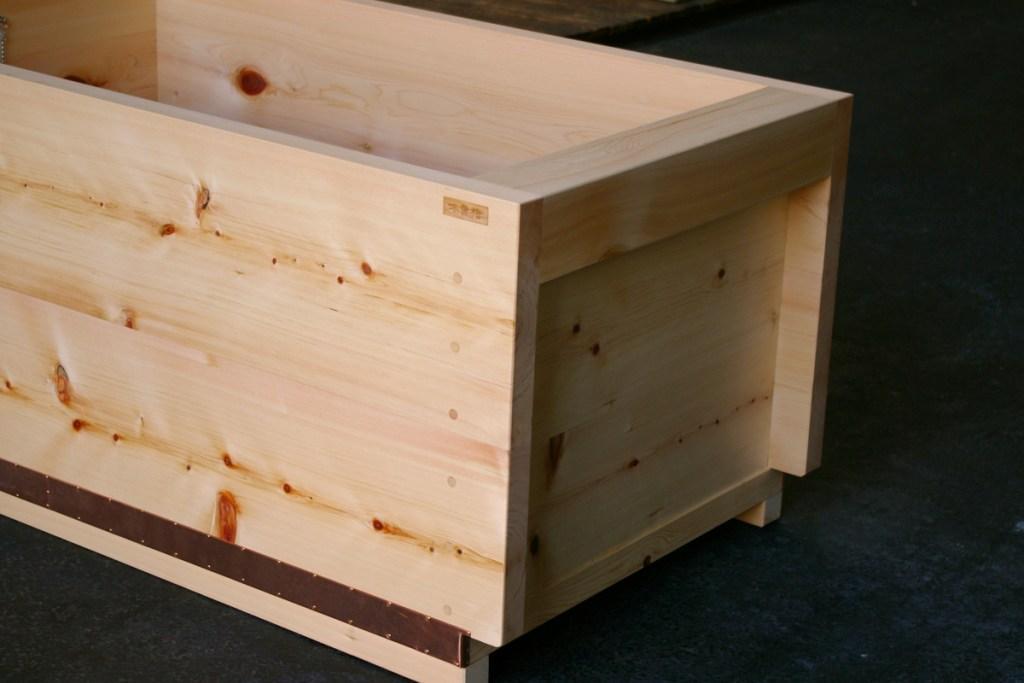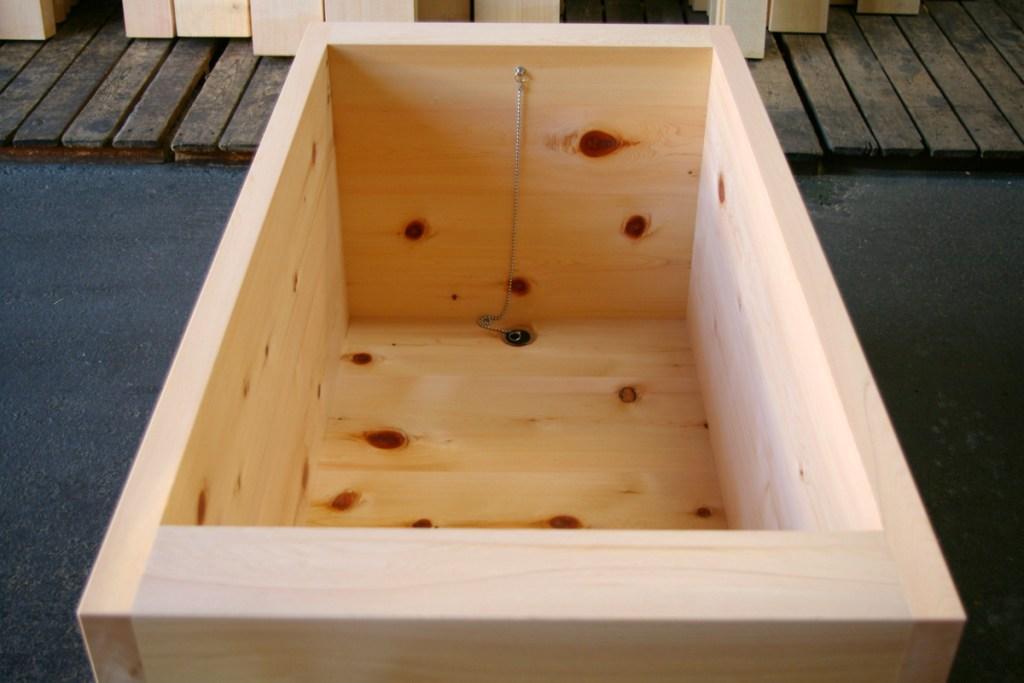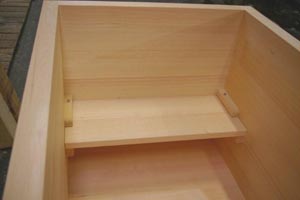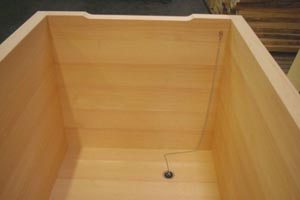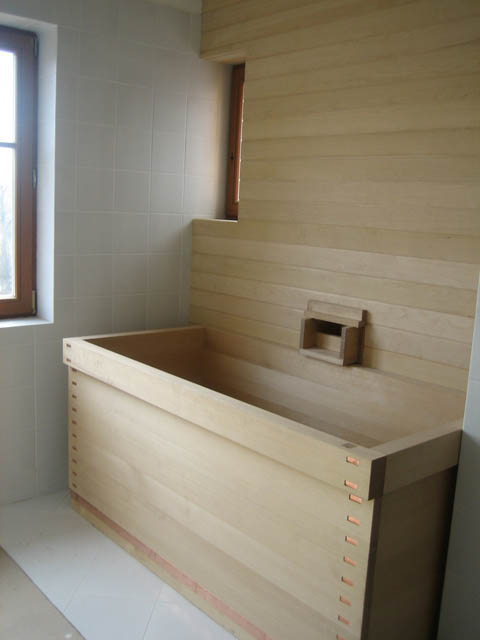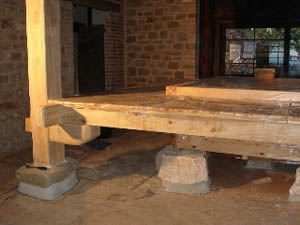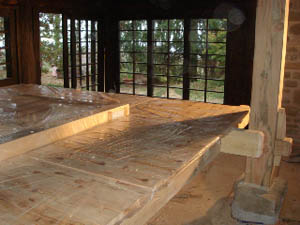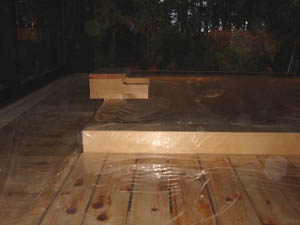I also have a technical question: What happens if, due to excessive heat the wood happens that a horizontal crack appears in the floor of the tub? Is this repairable in a manner or another? Please let us know.
(here below we are reporting extracts of the full correspondence for your reference)
About the the horizontal crack: please send me a detailed picture.
Is it in the joint between planks or in the middle of a plank?
How long/wide is it?
Do you think it leaks water?
when did it appeared?
Did you leave the tub dry for long periods?
Once we see the picture we will be able to give you better advice.
Concerning the crack, I went back to the site this morning and took some shots I am sending to you herewith.
To answer your questions:
– it seems to me that the crack is between two planks
– it is the total width of the tub’s bottom floor
– it is something like 1mm to 1,5mm wide
– yes, it leaks water unfortunately
– it appeared to us two days ago
– yes we left the tub dry sometimes, and moreover, a week ago we put in service a floor heating that is underneath the tub but also around it. It might have dried the air in the room. Added to a very warm summer here.
Timing of that problem is quite bad since we were ready for handing over the project to the owner client the 1st of september.
Thank you for your advice.
I see: the problem is definately the floor heating.
In general every heating system in the bathroom is bad for the bathtub. It dries up the wood especially if it runs for many hours a day (like central heating systems).
Of course it depends also on the width of the bathroom and height of the ceiling, in any case, we recommend to keep an hygrometer in the bathroom and check regularly.
Floor heating is even worse for the wood tub because the heat tends to concentrate towards the floor and the humidity is washed away systematically as hot air moves upwards.
I recommend to use an underwater epoxy sealant. It should be pushed into the crack with a spackle, to fill it up completely. You may finish the last 1mm with underwater epoxy putty which has a color similar to wood. I could sent you this material by EMS mail but it takes over a week (now customs are full because of holiday period tail).
If you need to repair before sept.1 , try to look for this material locally and let me know if you have problems.
Also, remember not to use the heating when the tub is empty. If you need to, fill the tub with 10cm of water and use the heating without fear.
Thanks for your detailed answer.
I think it would be wiser if you send me the underwater epoxy sealant, and the underwater epoxy putty, that you have already used, and that has already given good results.
If you can do it as soon as possible, and send me the invoice for immediate payment, I would appreciate it a lot.
I checked with my carpenter and he recommends no putty, just make the epoxy fully penetrate. It has a greish color.
after it is dry, you can sand or plane it.
This morning we sent you an EMS parcel. Please let me know if you could fix the problem.
Thank you very much for your product. We received them last wednesday, and the result seems good for the moment. No more leaks!
From the aesthetic point of view, the repair is ok. Sure the color is grey and you can see it if you know it is there, but it is not shocking at all. I will send you a photo tomorrow.
We have not used the hiba oil on the tub yet, but it smells so great in the water.
